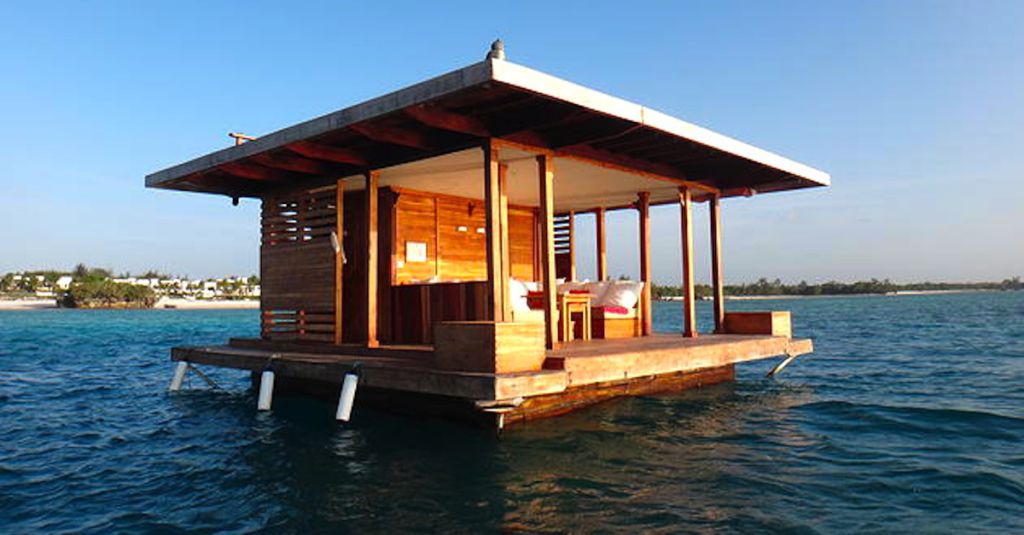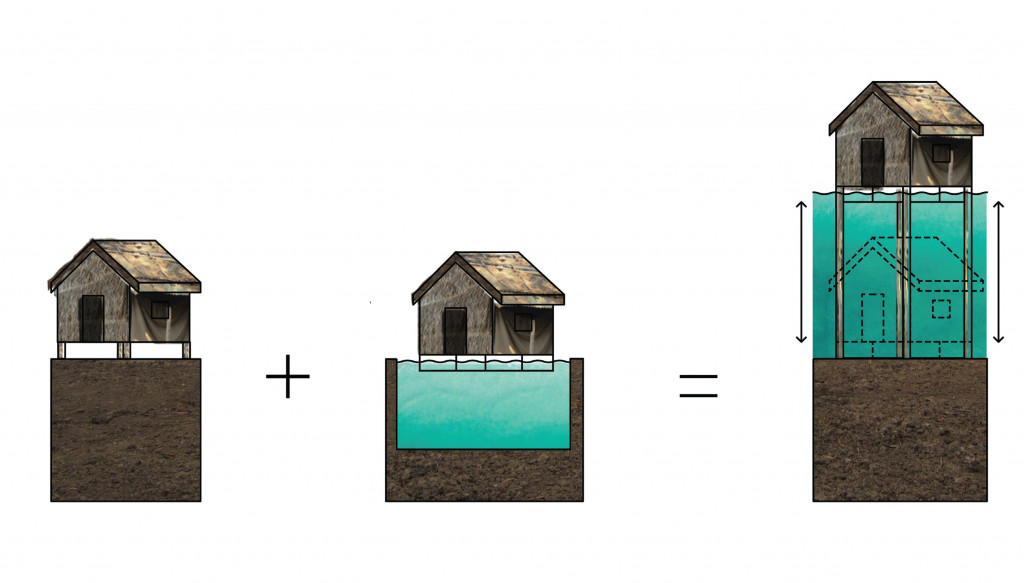Rising water levels are causing severe floods in many countries. Amphibious houses are an alternative solution for the flood that allows the house to rise along with the water flow rather than get damaged in floods. In flood-prone areas, people either live in floating structures or else in elevated buildings. These houses are mainly used in areas which are not accompanied by heavy floodwater flow. During the onset of the flood, this house rises up and returns back to the same position without any damage when the water recedes. These amphibious houses are considered as a sustainable solution for these rising water levels.
This article will explain more about the principles of amphibious houses and any relevance of them to be adapted in flood prone areas.

How does the amphibious house work?
Building in a flood-prone area is challenging and by using the right building methods and construction, you can achieve easily. The best strategy for reducing flood water damage is to rise along with the floodwater. Most people live either in elevated stilt homes or in water as floating structures. The areas will be having six months continuous slow pace flood and the other six with normal conditions. Thus, people in elevated find it difficult to use their home during normal days as well. So, the idea of amphibious house pop up, which as the name indicates can live in both land and water.
The great advantage of an amphibious house is that the house will not get damaged even after the flood water recedes, and the house rests back to its original position. During the onset of the flood, the residents can either live in there or rehabilitate, their house will be adapted and will be the same as before when they return.
The developers designed mainly 3 types of houses to overcome the issue – to raise the ground floor, shifting all basic activities to the structure’s upper floors, and then amphibious houses. Amphibious houses are further differing as a rising house, lift house, and floating house. You can build these houses using prefabricated floatation systems.
Lift house consists of a group of building units arranged around a courtyard having service spines on both ends. During the flood, the house will get lifted up. Meanwhile, the service spine remains flooded which is connected to the house with the help of flexible piping systems. For instance, in the amphibious house in Maasbommel, Netherlands; two housing units were clubbed together and reported that after the flood the house landed safely into the foundation without any obstructions stuck underneath.
Elevate using Buoyant foundations

Buoyant foundations work like a floating dock. You can manufacture these blocks with Elastic Polystyrene. Make sure the house is elevated at least 1.5m from the ground. These foundations will only go up and down vertical movements with the help of vertical guidance posts. These posts are given on 4 edges of houses and prevent the house from flowing away.
This buoyant foundation has more advantages and is effective. First of all, you can retrofit this foundation into an existing building. Also, it is relatively less expensive than elevating on stilts. It is less prone to hurricane and wind damages. It does not displace the building horizontally, it only elevates the house in up and down movement. The structure remains low to ground during the absence of flood conditions. Moreover, it removes the problem of rising sea levels due to intense global warming that happens nowadays.
Conversion of normal house to amphibious
Instead of constructing amphibious houses, there is an opportunity for giving a buoyant foundation for an existing building. That way, you do not want to rehabilitate or leave behind your own house. By lifting the house and constructing a buoyant foundation will make any ordinary building amphibious. The cost of both lifting and foundation will cost up to INR 3-4 lakhs. This makes your homes safer and usable. You can afford this opportunity easily by availing development schemes or loans.
Since there are no amphibious houses in India, while creating an attempt for its construction in flood-prone areas, keep in mind the climatic responsive design and low cost locally available materials.
In short,
Amphibious foundations are a proven, low-cost, low-impact flood protection strategy. They can save a flood-prone community in the face of disaster.
These are cost effective, indigenous and eco-friendly house designs which are an intelligent answer to the future flood prone areas making it 100% liveable.
They are self-sufficient buildings and recycled plastic bottles are used for foundations which makes it more environmentally friendly.
It’s time to create a new kind of environment that meets the needs of humans in the present without limiting the ability of future generations to meet their own needs. What do you think?